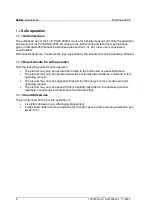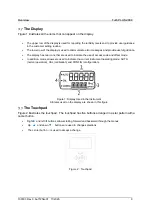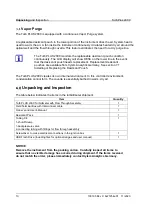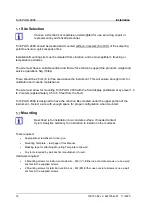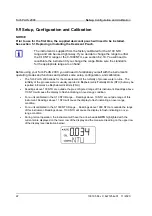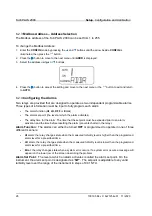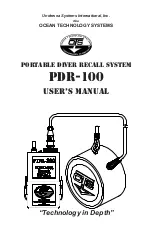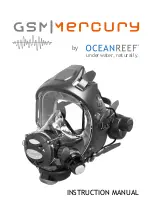
Turb PLUS 2000
Installation
18
100193 Rev 0 ba77254e01 11/2020
6. Connect the other end of the tube to the water sample source following proper plumbing techniques
applicable to your facility and configuration.
NOTICE
After completing water inlet and drain connections, check all tubing and connections
for any leaks, weeping, breaks or defects of any kind. Repair/replace as needed.
Electrical Connections
DANGER
High voltage and electrocution hazard: To avoid risks possible death,
personal injury, property damage, and failure of the instrument to perform
as intended only licensed and qualified electricians should install the
instrument following all codes, regulations, standards and instructions.
Turb PLUS 2000 is electrically powered. Installation MUST be performed by licensed electrician
following all instructions and comply with all local, state, federal and other governmental
requirements, and with all building and construction codes and standards for all electrical
connections and for installation of electrical connections to and between the instrument and any
peripheral devices.
ALWAYS
take proper precautions to recognize, evaluate, and control electrical hazards during
installation, programming, use and service/maintenance.
Requirements
:
•
The Turb PLUS 2000 is equipped with a 100-240 VAC, 47-63 Hz switching power supply.
BEFORE
installing, verify that the line voltage falls within these specifications
.
•
A breaker or method of disconnecting power must be placed within 2 meters (6 feet) of the Turb
PLUS 2000.
•
While making connections, see Figure 5.
The Turb
PLUS 2000 is not supplied with a power
cord
.
•
All of the electrical connections to the instrument are made through the Turb PLUS 2000 Junction
Box (see Figure 5), which should be located directly under the sensor portion of the instrument.
•
The power cable glands will accept cable diameters from 5.8mm (.230 in) up to 10 mm (.395 in.).
•
All terminals are designed to accept wires in the range of 12-30 AWG. All wires should be stripped
to a length of 6 mm (¼ in).
•
A strain relief strap is provided to reduce tension on the power terminals.
•
The connections are labeled within the terminal box and are self-descriptive (see Figure 5).
•
Plugs are inserted into the alarm and 4-20mA/RS-485 cable glands when shipped, to ensure a
watertight seal. These plugs should be removed and discarded when cabling to either of these
connections.
•
Maintain watertight seal.
It is the owner’s and installer’s responsibility to assure that the
watertight seal is maintained after the terminal box has been wired for operation. Failure to
properly tighten any of the cable glands around a cable or plug can create an electrical
shock/electrocution hazard.



